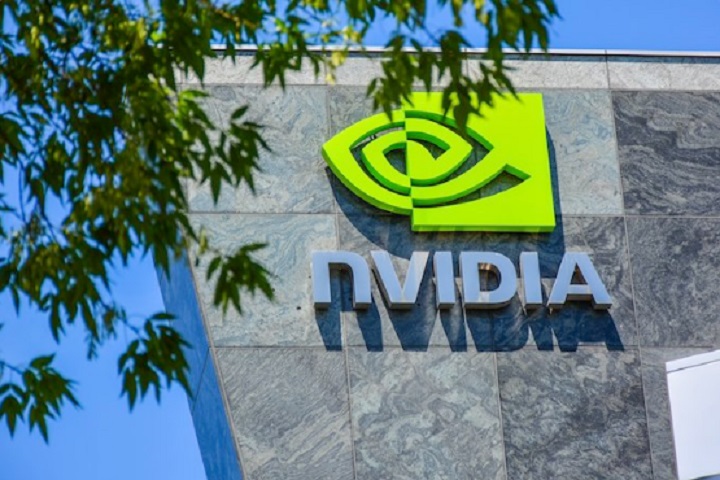For a long time, graphics processing units (GPUs) designer and tech company NVIDIA (NASDAQ:$NVDA) was struggling as its main competitor Qualcomm (NASDAQ:$QCOM) swooped in and knocked it out of the smartphone market. In the last two years, however, NVIDIA’s stock rose by almost 600% — becoming one of Wall Street’s most favored stocks.
So what did NVIDIA exactly do to stage such a comeback? Below we discuss some of the influences — both within and outside the influence of company management — that allowed NVIDIA to return from its fall to rock bottom.
Graphics cards are now cheaper than competitors
NVIDIA has traditionally sold more expensive gaming GPUs while its competitor AMD (NASDAQ:$AMD) sold its GPUs at a cheaper price. Now, NVIDIA has changed its business strategy and challenging AMD with its own set of lower-priced GPUs. For example, its GT 1030 — priced at $70 — undercuts AMD’s similar card RX 550 which is priced at $80. As well, NVIDIA’s new GTX 1050 Ti, which is available for $139, takes the title as the cheapest VR-ready card from AMD’s similar RX 470, which is priced at $170.
However, just because NVIDIA is now spending time in the low-end market doesn’t mean that the company is slacking on its position in the high-end market. The tech company’s $700 GTX 1080 Ti surpasses AMD’s $430 RX 580 in quality and usage. As a result, even though NVIDIA’s card is priced higher, it is worth it due to exceptional quality. While AMD is fighting back with a next-generation of Vega GPUs to be released later this year, NVIDIA has plans to re-retaliate with new Volta GPUs.
Ambitious and aggressive competition has helped NVIDIA’s gaming GPU revenue greatly. In fact, the GPU revenue rose by 49% annually to reach $1.03 billion last quarter. The GPU revenue accounted for about 53% of its total revenue.
When looking at it in long-term lenses, NVIDIA’s success in this particular business may not just be temporary. With the slow comeback of PCs, PC game makers and gamers alike demanding better graphics, the rising popularity of new virtual reality (VR) technologies, and cryptocurrency mining using GPUs, it looks like GPUs are now more in demand than ever.
Machine learning is gaining more traction in the market
Well-known tech companies like Facebook (NASDAQ:$FB) and IBM (NYSE:$IBM) make use of machine learning in order to analyze its data and use the information collected to better their products. GPUs typically perform these machine learning functions with better efficiency than traditional central processing units (CPUs). As such, companies like Facebook and IBM have purchased NVIDIA’s top-of-the-line Tesla GPUs to power their data centers along with traditional CPUs.
NVIDIA claims that these top-tier GPUs can process information at a rate about two to five times faster than Intel’s (NASDAQ:$INTC) similar Xeon Phi CPUs. As a result, Intel is planning a retaliation with new next-generation Knights Landing CPUs, hoping to win back its customers. However, many big companies have already bought a number of NVIDIA’s Tesla GPUs, so Intel’s new CPUs will have to perform at a much better rate to even have a chance at breaking back into this market. The demand for the Tesla GPUs resulted in an 186% annual rise to $409 million in NVIDIA’s data center revenues. The Tesla GPU revenue accounted for about 21% of NVIDIA’s total revenue.
Tegra returns
When Qualcomm’s Snapdragon CPUs bumped NVIDIA’s Tegra CPUs out of the mobile market, the company refocused its product towards devices like set-top boxes, gaming tablets, hybrid consoles, and connected cars. Unlike its use in the mobile market, the Tegra CPUs were much more successful in these other products’ markets. For example, in the connected car market, the Tegra CPU became the processor to use for infotainment and navigation systems in high-end cars.
Seeing an advantage to really establish itself as a first mover in the connected car market, NVIDIA capitalized and launched Drive PX. The Drive PX is a “supercomputer” that allows a vehicle to become autonomous — meaning a driver won’t be needed. Already, big name auto companies like Toyota (TYO:$7203), Honda (TYO:$7267), Audi (ETR:$NSU), BMW (ETR:$BMW), Mercedes-Benz (ETR:$DAI), Tesla Motors (NASDAQ:$TSLA), and Chinese search engine giant Baidu (NASDAQ:$BIDU) — which is expanding its company towards autonomous cars — have all partnered with NVIDIA for this technology. As a result, NVIDIA’s automotive CPU revenue gained by 24%. — accounting for 7% of NVIDIA’s total revenue.
Besides the Tegra CPU, NVIDIA’s Tegra system-on-a-chip (SoC) is currently being used for Nintendo’s (NASDAQOTH:$NTDOY) newest console, the Nintendo Switch. According to an analyst at RBC Capital Markets Mitch Steves, NVIDIA stands to earn up to $400 million if the Nintendo continues to grow in popularity. This expectation, if it ends up coming true, will be of great help to the company, because the $400 million could help pay off the $264 million in yearly revenues NVIDIA will lose thanks to the conclusion of the graphics licensing deal NVIDIA had with Intel.
NVIDIA’s biggest advantage: power efficiency
Several investors and tech-junkies believe that what gives NVIDIA the most competitive edge is the power efficiency of its chips. For example, tech-based web-blog Extremetech pointed out that one of the main differences between NVIDIA’s GTX 1060 and AMD’s RX 580 is that the GTX 1060 consumes about 64% more electricity per frame of animation compared to the RX 580. As well, business website Bloomberg replaced the 2000 CPUs running its bond pricing application with 49 NVIDIA Tesla GPUs — the CPU system was $4 million with $1.2 million in annual energy bills while the new GPU system cost less than $150,000 with about $30,000 in energy bills.
As seen above, not only does NVIDIA chips provide more power — companies also pay less overall to run their systems. NVIDIA’s power efficient chips strengthen its stance when compared to its competitors and help the company have a more solid stance within the industry.
Summary
NVIDIA is clearly doing well overall — analysts even expect that both the tech company’s earnings and revenue will increase by 20% this year. However, if you are interested in investing in some of NVIDIA’s stocks, make sure you have a bit of extra money lying around. NVIDIA’s stocks aren’t cheap — at 46 times earnings, it is a lot higher than the semiconductor industry average of 24 times earnings.
In addition, NVIDIA could soon be faced with competition from Qualcomm and Intel in the automotive market as both semiconductor producers are making big acquisitions to prep for their break in the automotive industry. As well, while NVIDIA does have a plan to fight back against AMD’s Vega GPUs, they could still damage NVIDIA’s overall GPU sales. As such, if you wish to invest in NVIDIA, it is strongly suggested that you do all the research and consult an advisor if needed.
Featured Image: Twitter










